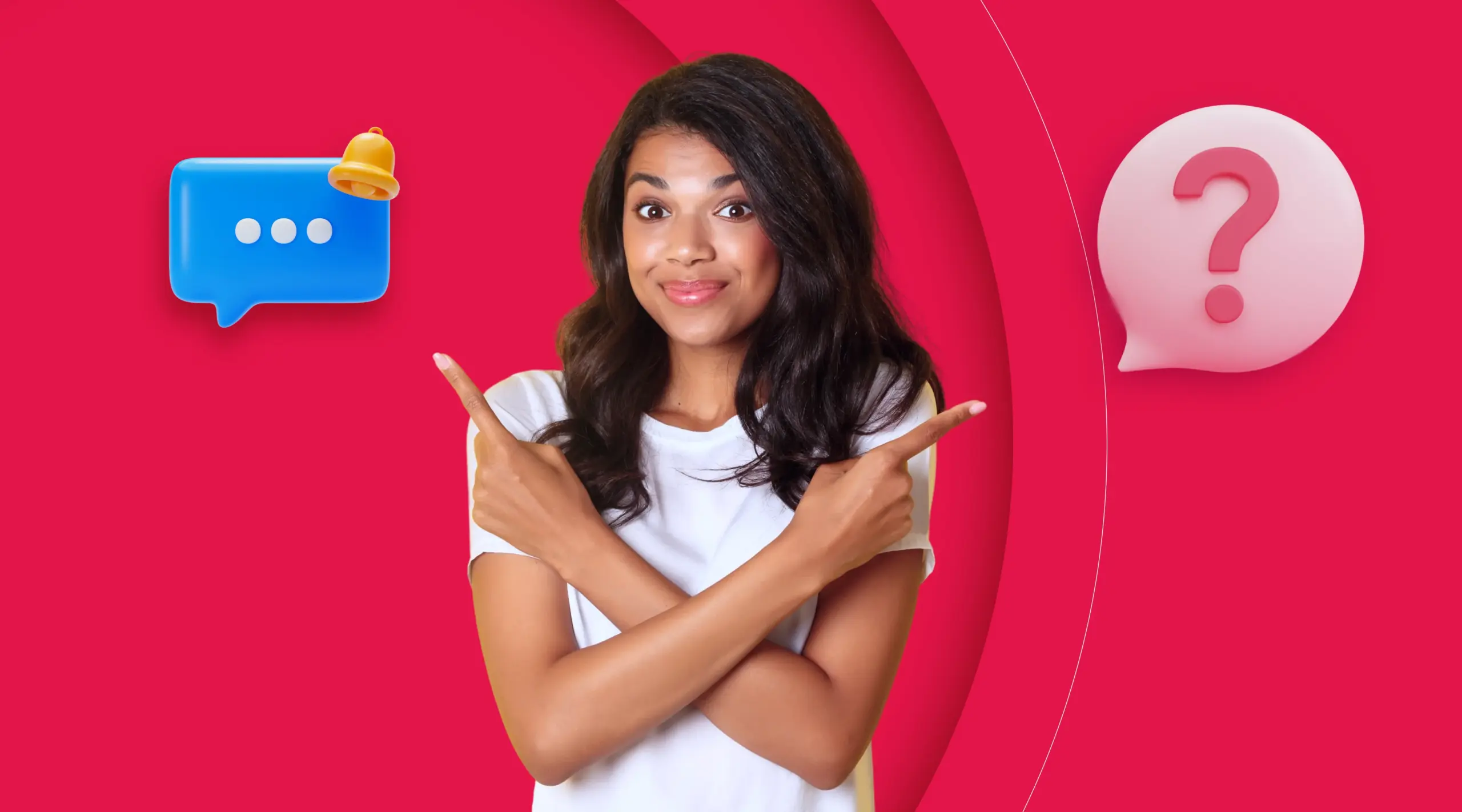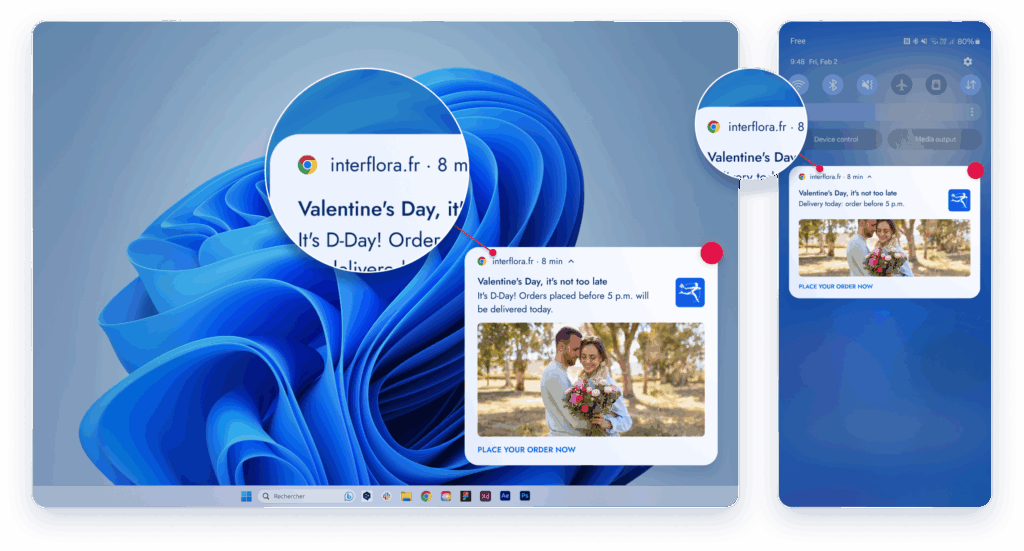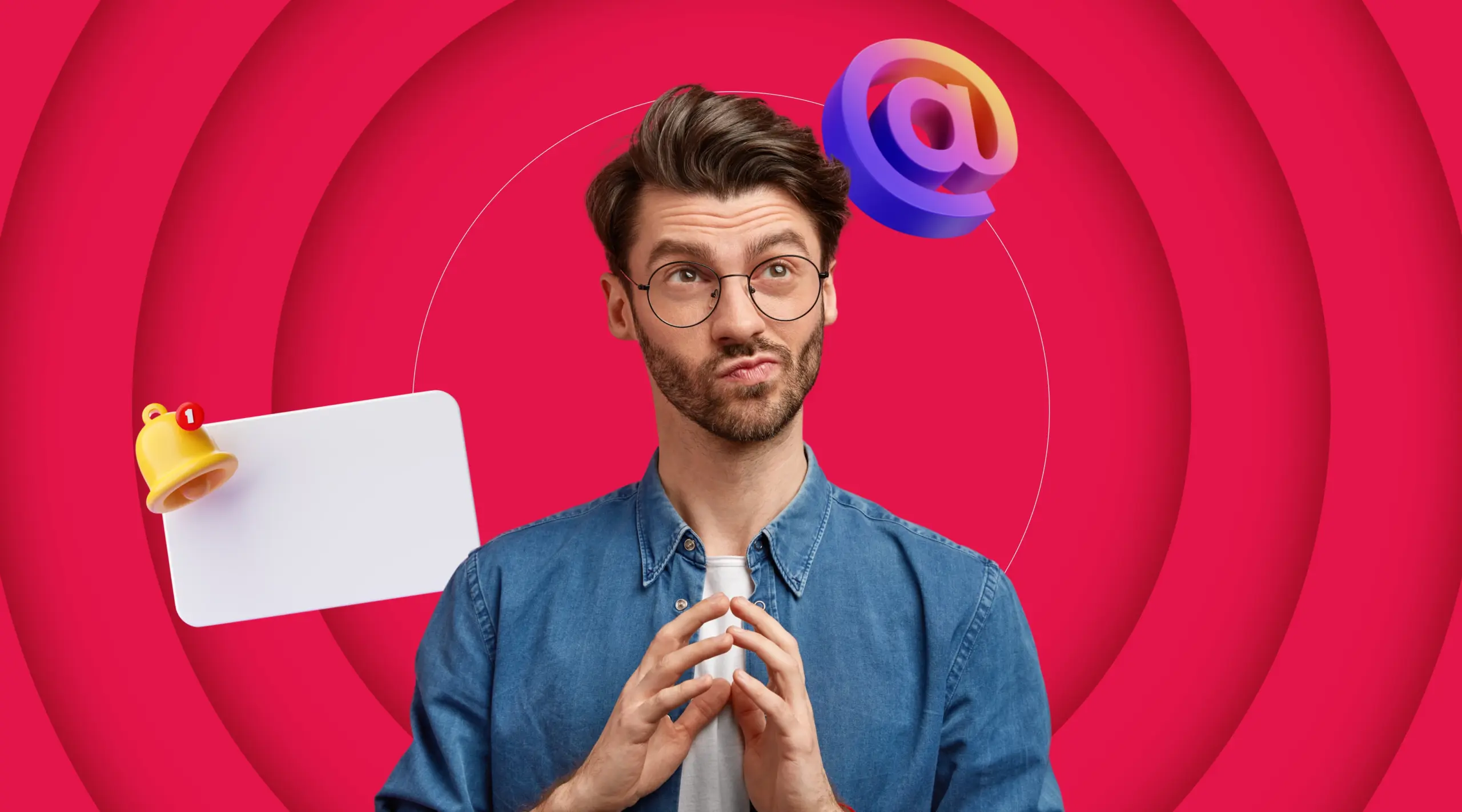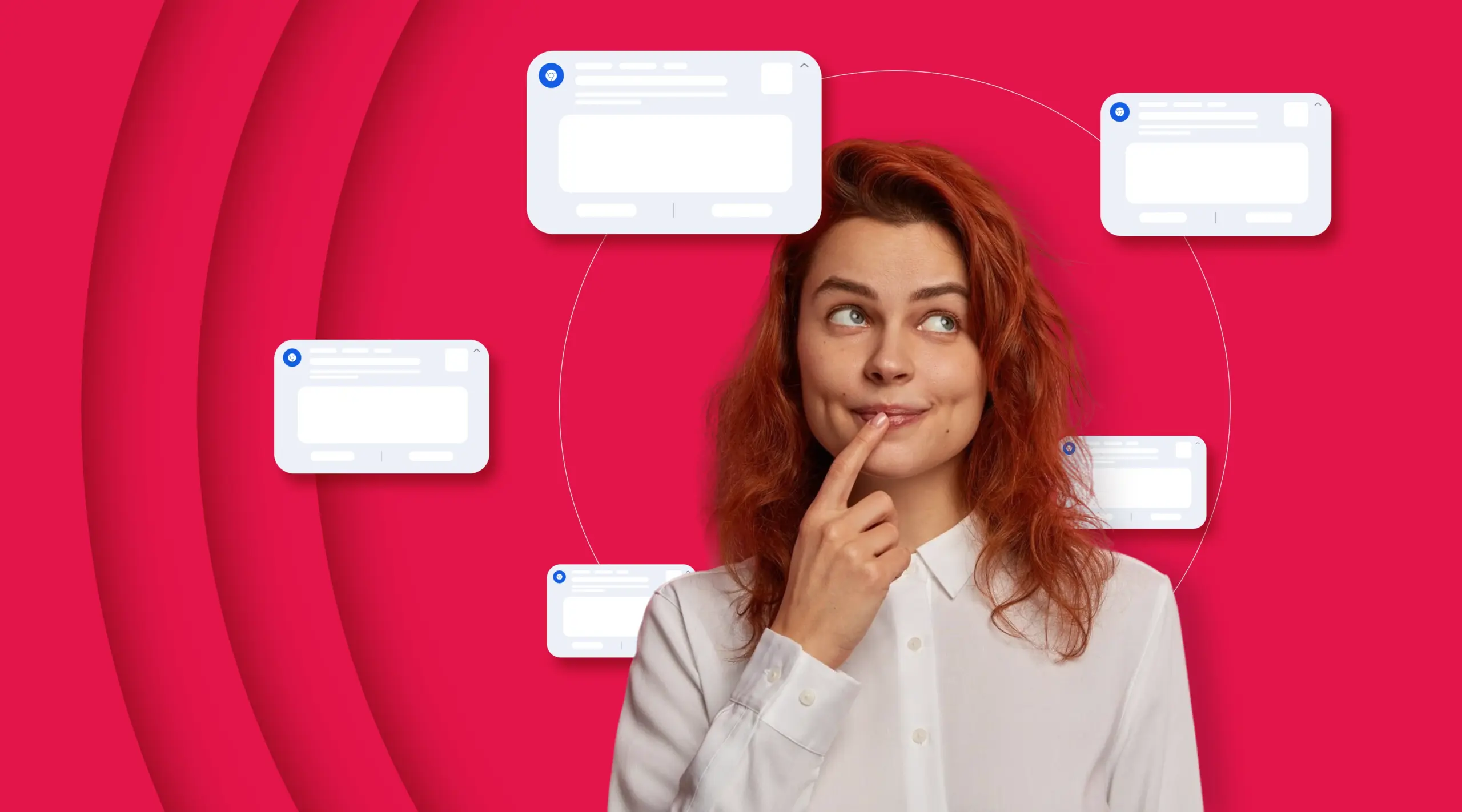
Does SMS marketing still have a future? For more than two decades, SMS has reigned as a preferred direct channel thanks to its exceptional open rate—close to 98%—and its ability to reach smartphone owners instantly. However, in recent years this channel has begun to show its limits.
On the one hand, the cost per message remains high (around €0.05 per SMS), which weighs on the budget of large-scale campaigns.
On the other hand, consumers are increasingly solicited by promotional texts, leading to saturation and possible fatigue toward these messages.
Finally, regulatory constraints (GDPR) require explicit consent before any marketing send and easy opt-out, with penalties for non-compliance.
These factors are pushing marketers and e-retailers to explore alternatives to support, complement, or replace traditional SMS campaigns.
- The limits of SMS marketing today
- RCS: the next generation of SMS—richer and more engaging
- Web Push Notifications: a web alternative to SMS
- Email marketing: still a powerful pillar… provided you reinvent it
- Mobile & in-app push notifications: loyalty at the heart of the app experience
- WhatsApp Business & instant messengers: powerful yet regulated channels
- Performance comparison by channel in 2026
- Pros and cons of SMS alternatives
- So, ready to use all the alternatives to SMS campaigns?
The limits of SMS marketing today
Despite enviable raw performance, SMS marketing in 2026 faces several challenges:
Reach vs. intrusiveness
Even though SMS is accessible to all mobile phones, the abundance of commercial texts tends to tire users, who increasingly perceive this very personal channel as intrusive. According to one study, 52% of consumers receive promotional texts from four or more companies—clear evidence of increased solicitation. Sending promotional texts too often is also the fastest way to lose subscribers, according to consumers.
Costs and ROI
Per unit, a few cents per SMS may seem negligible, but a campaign to tens of thousands of contacts represents a significant investment (for example, ~€50 excl. VAT for 1,000 SMS). Granted, SMS ROI remains solid (€4 in revenue for €1 spent by some estimates), but other, less expensive channels can rival it in effectiveness.
Format limitations
An SMS is limited to 160 plain-text characters, which constrains the message. No images, no rich formatting, and interactions are limited to a clickable link or the recipient’s text reply. For elaborate promotional campaigns or brand storytelling, the format quickly shows its limits.
Regulatory compliance
As with email, regulation (GDPR and local laws) requires explicit opt-in from SMS marketing recipients. You must also respect permitted sending hours and include an opt-out method. This adds friction to building a usable contact base.
Given these limits, it’s legitimate to ask which other channels can effectively reach customers in 2026. Fortunately, recent innovations offer marketers a range of alternatives or complements to classic SMS: RCS, web push, “new-look” email, in-app notifications, WhatsApp Business, and more. Here’s an overview of these emerging or reinvented channels—along with their performance, costs, accessibility, and use cases.
RCS: the next generation of SMS—richer and more engaging
Among modern alternatives to SMS, RCS (Rich Communication Services) stands out as a promising lever. It combines the simplicity of SMS with the richness of instant messengers: HD images, videos, product carousels, interactive buttons, read receipts… And all without needing to install an app.
Why do brands love RCS?
With RCS, companies can:
- Display their verified name and logo, reinforcing trust.
- Track campaign performance: messages read, clicked, ignored…
- Create interactive scenarios with messages more visual and engaging than classic SMS.
And the numbers speak for themselves:
- 90–95% open rate—on par with SMS.
- 15–30% click-through rate, well above traditional SMS (2–4% on average).
- Some use cases reaching up to 50% CTR.
The rich format (visuals, dynamic CTAs) stimulates engagement as soon as the message arrives. For some scenarios, RCS even rivals WhatsApp Business in performance.
What about RCS rollout?
In 2026, RCS coverage is growing fast:
- All recent Android smartphones support it by default.
- Apple has announced RCS compatibility on iPhone with iOS 18, finally opening the door to broader distribution.
However, availability still varies by carrier and geography. RCS relies on mobile data or Wi-Fi, not the GSM network, which limits reach in poorly covered areas.
What budget should you plan for RCS?
The cost of an RCS message is comparable to SMS (slightly higher but similar), yet the return on investment is often superior thanks to richer interactions and stronger engagement.
RCS dramatically enriches your campaigns while keeping SMS-level accessibility. It offers a smooth, customizable, and visually attractive conversational experience. An excellent ally for tomorrow’s marketing campaigns, whether as a complement to (or replacement for) classic SMS.
Web Push Notifications: a web alternative to SMS

Among modern alternatives to SMS campaigns, Web Push Notifications stand out as one of the most innovative! This clickable message, sent directly by the web browser, appears on the user’s screen—even after they’ve left your site. On desktop or mobile (Android, and iOS since Safari 16.4), visitors can subscribe to your notifications with a single click!
A GDPR-friendly channel with no personal data
Unlike SMS or email, web push requires neither a phone number nor an address. The user gives explicit consent via their browser. The result is a fast opt-in, no form required. All fully compliant with GDPR, since no personal data is collected.
Engaging performance
- ~15% acceptance on average (vs. 1–3% for email forms)
- ~5% click-through rate (CTR), well above email (~2%) and close to SMS (~7–19%)
- Immediate responsiveness: messages appear in real time
- Unsubscribe rate < 0.4% when messages are well targeted
Ultra-competitive costs
With Adrenalead, you can send Web Push campaigns to your own base for free, up to 1,000 subscribers (SaaS solution). In addition, we offer a network of more than 60 million opt-in internet users to extend your offers to profiles not subscribed to your Web Push (ad network solution). It’s a powerful lever, with a cost per click far lower than SMS or traditional display.
Limits to be aware of
With the SaaS solution, Web Push requires the user to visit your site and accept notifications. In contrast, using the ad network is less constraining because users don’t need to visit your site specifically. Some devices or browsers may limit or block opt-ins. The format remains simple (title, image, link) and is better suited to short messages than rich content.
Email marketing: still a powerful pillar… provided you reinvent it
Often seen as outdated compared to more direct channels like WhatsApp or Web Push, email marketing remains a key channel in 2026—especially for delivering rich content and nurturing long-term relationships.
Why email holds its ground
- Universal reach: everyone has an email address. And unlike third-party platforms, the email subscriber base is owned by the brand—a major strategic advantage.
- Rich, controlled content: an email can go further than an SMS or a notification. Long copy, visuals, product carousels, buttons, storytelling—everything is possible.
- Mature tooling: automation, scoring, behavioral triggers, A/B tests, AI for message personalization… The ecosystem is robust and well known to marketing teams—and also used by other levers like Web Push.
Its limits…
Yes, email suffers from:
- Declining open rates (~20%) and modest clicks (~2–3%).
- Fierce inbox competition (Promotions tabs, spam filters…).
- Lower adoption among Gen Z, who prefer more instant channels.
…but a strong push to reinvent the format
- AMP for Email enables interactive emails (carousels, forms, one-click actions).
- Omnichannel strategies (e.g., email + SMS or push) boost performance.
- AI helps personalize content more finely and contextually.
Bottom line
Email is no longer the single king channel, but it remains an indispensable link in a multichannel strategy. It’s an excellent lever to:
- Tell stories
- Build loyalty
- Accompany customers over time (newsletters, personalized offers, loyalty programs…)
Adrena’tips: don’t pit email against push/SMS—orchestrate them smartly. Used at the right moment, email remains a profitable, non-intrusive, and consistently relevant lever.
Mobile & in-app push notifications: loyalty at the heart of the app experience
If you have a mobile app, push notifications are an excellent alternative or complement to SMS campaigns. Once your app is installed, users can authorize notifications. The result: you can send messages even when they’re not actively using the app.
Two push types to know:
- Classic mobile push: appears directly on the smartphone screen, like an SMS.
- In-app notifications: displayed during app use (e.g., welcome pop-up, tutorial, flash promo…).
These channels allow you to stay in real-time contact with customers and offer a more immersive experience.
Compelling performance
Mobile push blends instantaneity with personalization:
- 82% of notifications are seen within 5 minutes.
- Personalized campaigns reach up to 14% opens—well above email or classic banners.
What’s more, the sending cost is zero, aside from app development or platform usage (Firebase, OneSignal…). This lets you send high volumes with no additional per-send fees.
Drawbacks to keep in mind
But this channel isn’t without limits:
- The user must have installed your app.
- On iOS, opt-in is a barrier: only 40–50% of users accept notifications.
- Managing marketing pressure is crucial: too many notifications = unsubscribes or disabled permissions.
Adrena’tips: mobile push is best for engaging your existing users. It’s less suited to acquiring new customers.
WhatsApp Business & instant messengers: powerful yet regulated channels
Messaging apps like WhatsApp, Messenger, or Telegram aren’t just for chatting with friends anymore. More and more businesses use them to stay in touch with customers. And with good reason: WhatsApp now has over 2 billion active users.
Why are brands interested?
Because it’s many customers’ preferred channel. Nearly 66% of internet users worldwide say they’d rather talk to a brand via instant messaging than by email or phone. And the performance figures are impressive:
- 95–98% read rate within minutes.
- 15–35% click-through on well-targeted campaigns, with peaks of 50% for ultra-personalized content.
Add to that rich messages (buttons, visuals, PDFs, videos…) and smooth interactions (chatbots, integrated customer service, etc.), and you have a high-impact channel.
Yes—but with conditions…
To use the WhatsApp Business API, you must follow certain rules:
- Mandatory consent: the user must initiate the conversation or opt in voluntarily.
- No mass “cold” campaigns: Meta limits volumes and charges per conversation.
- Variable pricing: in 2025, the cost of a marketing message can reach €0.08, depending on Meta’s categories.
And of course, adoption varies by country. WhatsApp is very popular in Europe and Latin America but less so in the U.S. or parts of Asia, where other platforms dominate (iMessage, WeChat…).
WhatsApp Business: a bonus that complements your usual channels
Instant messaging is a highly effective lever for building relationships with customers: instant support, sales follow-ups, personalized interactions… It’s a perfect complement to traditional channels.
Adrena’tips: reserve WhatsApp for high-value exchanges (advice, order follow-up, personalized offer) and use email/SMS for mass communications. This preserves trust and avoids the intrusiveness effect.
Performance comparison by channel in 2026
We’ve reviewed the main alternatives or complements to SMS marketing: RCS, Web Push, email, app notifications, WhatsApp. How do they compare on hard performance metrics? The table below summarizes key indicators (estimated averages, which vary by industry and list quality):
| Channel | Open rate | Click-through rate (CTR) | Approx. cost per message |
|---|---|---|---|
| SMS marketing | ~98 % | ~4–7 % (average) — can reach ~19 % on engaged opt-in lists | ~€0.05 |
| RCS (rich SMS) | 90–95 % | ~15–30 % (up to ~50 % max) | ~€0.05–€0.10 (slightly above SMS) |
| Email marketing | ~20 % | ~2–4 % | ~€0.0002 (near zero) |
| Web Push notif. | Up to 90% | ~5 % (average) | ~€0 (excluding any platform subscription) |
| Mobile push (app) | ~50–80 % (if opted in) | ~3–5 % (average) | ~€0 |
| WhatsApp Business | ~95 % | ~15–35 % (best cases 60 %) | ~€0.05 (varies by country, Meta pricing) |
Classic “mass” SMS typically see a low average CTR (only a few percent). However, for well-targeted SMS to loyal customers, 4–7% clicks (and up to 19%) or replies are common—hence the importance of segmentation and personalization.
This table highlights several points:
- SMS retains unparalleled opens (almost all texts are read), but its average CTR remains the lowest. It’s excellent for ensuring a message is seen, less so for driving clicks—unless your offer is highly compelling or you foster interaction via replies.
- RCS and WhatsApp have similar profiles: opens nearly as strong as SMS, but far higher CTR thanks to interactivity. They blend the best of both worlds, at the cost of slightly more complex deployment and platform dependence.
- Web Push and app notifications offer a free, compliant alternative with mid-range performance. A 5% push CTR may look modest, but at zero send cost it can drive meaningful traffic—and those clicks are often high-quality (users already interested in your site/app). The trade-off: reach is limited to opted-in subscribers—often just a fraction of your total audience.
- Email is the most economical channel and scales widely, but engagement is the lowest. Its strength lies in carrying detailed content and staying in the inbox (people can revisit later), whereas an SMS/WhatsApp is often deleted once read.
Pros and cons of SMS alternatives
Every communication channel has strengths and limits. Understanding both lets you use each one judiciously and in combination. The table below summarizes the main advantages and drawbacks of each channel discussed:
| Channel | Main advantages | Drawbacks / limits |
|---|---|---|
| SMS marketing |
• Universal reach (all phones, no app needed) • Immediacy (~98 % opened almost instantly) • Short, effective messages for alerts & flash offers |
• High per-message cost (impact at scale) • Length limit (~160 chars) • Saturated channel → possible fatigue • Strict rules (opt-in, sending hours) |
| RCS (SMS 2.0) |
• Rich media & interactivity (HD images, buttons, carousels) • Native experience without third-party apps (Android client) • Detailed stats (delivered / read / clicked) • Verified sender (increased trust, anti-spam by design) |
• Uneven availability, iPhone support still limited • Requires data / coverage • Often pricier per message than SMS • Emerging channel → user education needed |
| Web Push |
• No personal data: privacy/GDPR by design • One-click opt-in (~15 % average subscription) • Very low cost (no per-notification fee) • Instant, customizable messages (title, body, image) |
• User must first visit the site (SaaS use; not required for ad-network reach) • Browser-dependent (iOS support is recent) • Notification fatigue → needs capping/frequency control • Short format: long content pushed back to site |
|
• Very broad reach (channel ubiquity) • Rich & long content (HTML, images, multiple links) • Low unit cost at scale • Mature ecosystem: automation, segmentation, personalization |
• Declining open/click (saturation, spam) • Deliverability uncertainty (filters & reputation) • Requires collecting emails & consent • Less “immediate” than push |
|
| Mobile push (app) |
• Highly reactive: shows directly on screen • Ideal for retaining app users • Powerful contextual targeting (in-app activity, geolocation) • Strong engagement if well personalized (often > email) |
• Requires an app (partial adoption on client side) • Opt-in varies by OS / version • Over-solicitation irritates if overdosed • Can be muted (Do Not Disturb modes) |
| WhatsApp Business |
• Massive audience (daily usage) • Near-guaranteed reading (~95 %) & fast replies • Rich messages (text, image, video, attachments, buttons) • Conversational channel (support, advice, assisted sales) |
• Explicit consent required (no “cold” blasts) • Message templates/windows regulated • Non-trivial cost at scale • Platform dependence & policy changes |
As you can see, no channel is perfect or self-sufficient. Each has distinct advantages to exploit—and limits to mitigate.
For example, SMS is unbeatable for ensuring urgent info is seen (e.g., verification codes, delivery alerts), whereas email excels at brand storytelling or detailing a full offer. RCS or WhatsApp enable truly interactive mobile experiences, while Web Push provides a simple, compliant way to retarget visitors with minimal friction. In-app notifications, for their part, reinforce retention among already-won users.
🎯 The watchword in 2026 is omnichannel. Marketers should combine these channels intelligently within a unified strategy instead of searching for the miracle SMS replacement. With a multichannel approach, you can leverage each channel at the right moment in the customer journey:
- SMS + RCS for critical messages (OTP, confirmations) or wide-reach promos, with SMS fallback if RCS isn’t available.
- Email + Web Push for newsletters and cart recovery: a detailed email plus an inciting push a few minutes after abandonment, for example.
- WhatsApp for premium client follow-up: personally contact top customers with exclusive offers or provide instant assistance.
- App notifications to engage active users: loyalty rewards, new releases, delivered directly inside the app they use.
By mixing channels this way, you maximize the odds of reaching the customer in the right context with the right message. Of course, ensure coherence (same brand tone) and orchestrate sends to avoid overwhelming customers with redundant information. Modern marketing automation platforms (CRM, Customer Data Platform, etc.) help centralize consent management and coordinate cross-channel campaigns.
So, ready to use all the alternatives to SMS campaigns?
Faced with saturation and the limits of traditional SMS marketing, 2026 marketers have a wider array of channels to communicate effectively with their audiences. Rich Communication Services, Web Push Notifications, instant messengers (WhatsApp & co.), next-gen emails, mobile notifications—each contributes to reaching customers where they’re most receptive, in the most suitable format. Rather than pitting them against each other, combining them strategically yields the best results.
By keeping the customer at the center (respecting their preferences, consent, and user experience), these alternative channels can advantageously complement SMS campaigns. For example, Web Push offers a mainstream, GDPR-friendly solution to re-engage a visitor without personal identifiers, while RCS enables promotional campaigns as interactive as a mini-website, right inside the messaging interface. As for WhatsApp, it brings a human, conversational face back to brand-customer exchanges.
It’s now up to e-retailers to intelligently integrate these new contact opportunities into their marketing plans. The investment is worth it: data shows a well-orchestrated multichannel approach significantly boosts engagement and customer satisfaction. In 2026, SMS marketing is no longer a one-of-a-kind channel but one of many strings to the digital marketer’s bow. Exploring alternatives like RCS or Web Push—with specialized partners such as Adrenalead by your side—will help you stay ahead, optimize budgets, and build with your customers a richer, more personalized, and more enduring relationship in the conversational era.
The alternative to SMS isn’t a single channel—it’s the orchestration of multiple channels to deliver the right message, at the right time, via the right medium. Now it’s your turn to compose the winning melody of your 2026 marketing campaigns 🎶!



